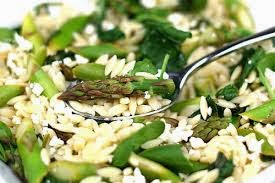 Boom
Boom
The existence of natural resources can only partially explain the success of any given town. When you live in La Crosse, you come to recognize that although all of us do experience some connection with nature, there is also a sort of industriousness here that seems woven into the cultural fabric. If it seems that every third building in La Crosse is a bank, a bar, a church
or that one out of every ten trucks passing in traffic is for a different construction company, it has to be understood that we started as a lumber boom town that survived the eventual total collapse of the white pine forest because of the industry and workforce that had grown up around the sawmills.
Boom, the term, has several meanings. It can characterize huge economic momentum – often a town that starts from nothing based on the abundance of some natural resource. But also, it refers to a boom of logs, or a long platform of cut and floating logs to be milled. La Crosse began as a fur trading outpost, but very quickly after it became the double boom of lumber (especially white pine in Wisconsin) and land speculation.

"Felling the timber and building sawmills at and near the Black River Falls were begun successfully in 1839. The Mormon lumbering operations there (1841-1844) formed a part of the earliest La Crosse history....Myrick gave in his autobiography a list of eleven mills on the Black and its tributaries....In the La Crosse area the first sawmill was built in 1852 by local residents: Timothy Burns, F.M. Rublee, John S. Simonton, and S.T. Smith. It stood at the southwest corner of Second and Badger Streets. This mill was the first manufacturing plant in the village of La Crosse that used steam power and was the first steam sawmill in the Black River territory."

We can imagine, by any commercial standards of any time in history, the sheer numbers associated with this industry and La Crosse's early years, by considering an annual output of its mills as less than 20,000,000 board feet in 1860 to nearly 178,000,000 (peak years) of 1890-1899. The total number of men working in timber in 1899 was 1,785; by 1905 a mere 34 men worked here in milling. Along with this boom came many many things, but two that might stand out to show us our city roots are: a seasonal work pattern based on lumbering, in which lumbermen could ride the rivers and mill from spring through fall, but would 'go into the woods' during the winter months to chop and harvest. The other, more unfortunately, was, frankly, the absolute greedy nature of the timber industry of the time.
Lumber practices in those early days of exploitation were nothing more than harvest and move on, harvest and move on, literally leaving total decimation behind.
The more board feet cut, the more profits. Men worked day and night in order to raft or railroad lumber south or back east. Some thought the resource was ever-replenishing, "The pine of the Wisconsin forests is practically inexhaustible." This type of thought process broke many sawmill towns. Not only did it take generations for any kind of timber regrowth, but Wisconsin, for many years had an almost impossible time selling itself to immigrants because stump fields made for very poor farm fields. The cautionary tale of the boom is bittersweet for us, bitter because we did not start with a strong sense for resource preservation, but sweet because our town survived where others did not due to our work ethic, manufacturing, perseverance, and an ability to learn: Wisconsin has become one of the true state leaders in the practice of

natural resource conservation. Blue collar La Crosse has come to embody, in many ways, a hopeful motto that labor itself might be good, but wise labor is even better.




















